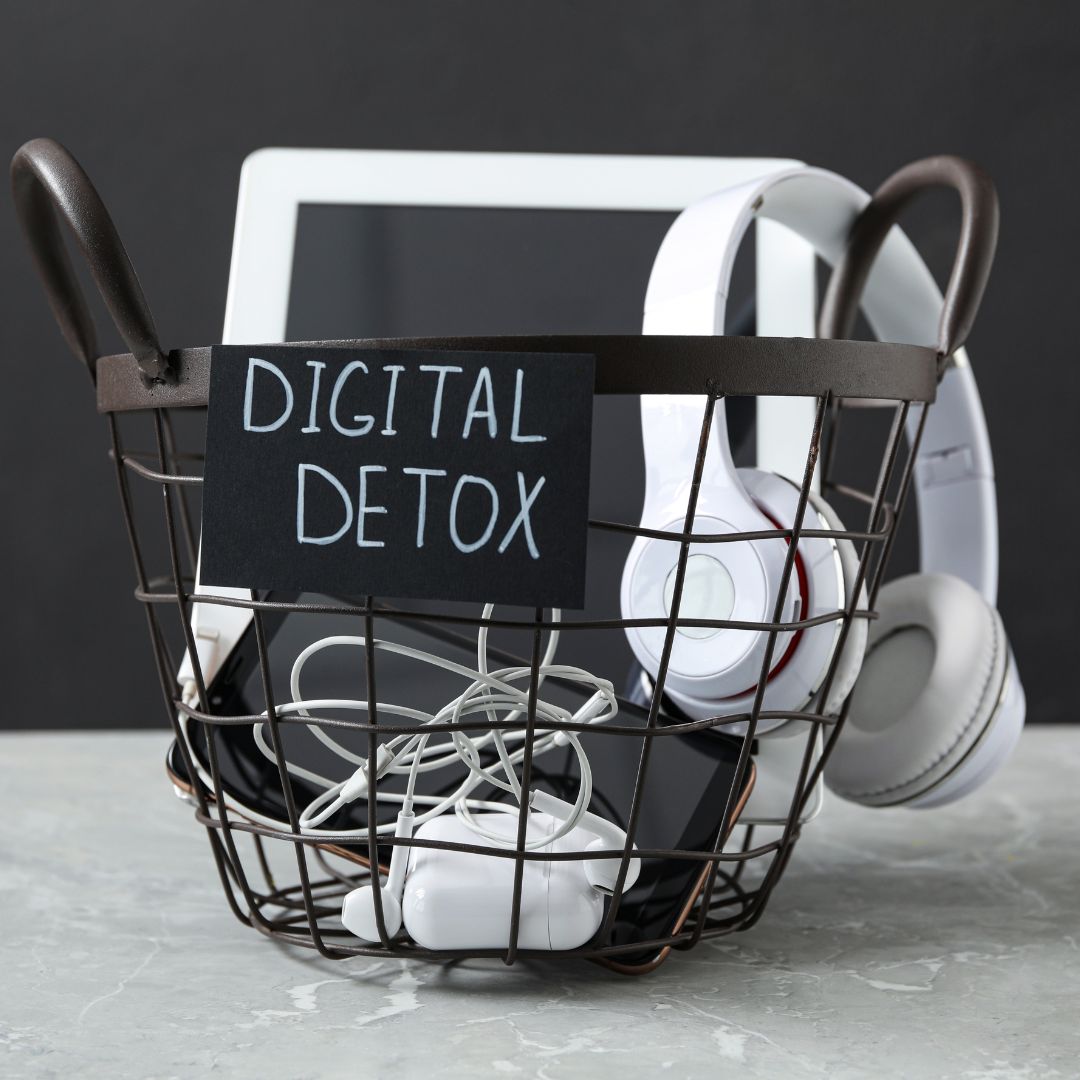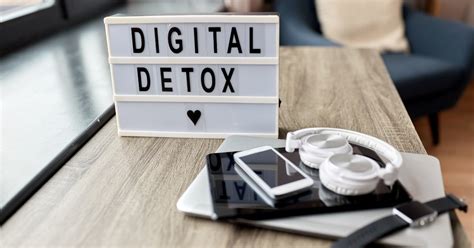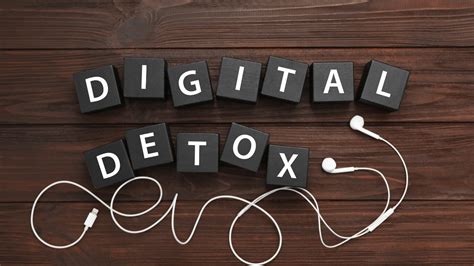In our hyper-connected world, where smartphones are extensions of our hands and notifications constantly vie for our attention, the concept of a digital detox has shifted from a fringe idea to a crucial wellness practice. It’s more than just logging off; it’s a conscious, intentional decision to disconnect from digital devices and online platforms for a period, allowing ourselves to reconnect with the real world, improve mental clarity, and reclaim precious time often lost down the rabbit hole of endless scrolling. For individuals feeling overwhelmed, perpetually distracted, or simply seeking greater presence and well-being, embracing a digital detox offers a powerful antidote to the relentless demands of the digital age. This topic resonates deeply with a growing audience, making it a prime subject for content designed to achieve high Google AdSense revenue through insightful, actionable, and comprehensive information. This extensive guide will explore the profound necessity of a digital detox, delve into its myriad benefits, unpack practical strategies for successful implementation, and illuminate how reclaiming your time from screens can fundamentally transform your life.
The Digital Overload: Why We Need to Disconnect
Our modern lives are inextricably linked to digital technology. From work to social connections, entertainment, and even basic utilities, screens are omnipresent. While technology offers undeniable benefits, its pervasive nature has led to a state of digital overload, impacting our mental, emotional, and physical health in subtle yet significant ways. Constant connectivity, the fear of missing out (FOMO), and the addictive design of many platforms create a perpetual cycle of engagement that often leaves us feeling drained, fragmented, and less present.
The compelling reasons for a digital detox stem from the detrimental effects of excessive screen time and constant connectivity:
- Mental Fatigue and Burnout: The brain is constantly processing information, notifications, and stimuli from digital sources. This relentless cognitive load leads to mental exhaustion, reduced concentration, and impaired decision-making.
- Increased Stress and Anxiety: The pressure to be constantly available, the endless comparison with curated online lives, and the exposure to negative news cycles can elevate stress hormones and contribute to anxiety, even leading to conditions like “techno-stress.”
- Sleep Disturbances: The blue light emitted from screens suppresses melatonin production, disrupting our natural sleep-wake cycles (circadian rhythm). Engaging with stimulating content before bed also keeps the mind active, making it harder to fall asleep and achieve restorative rest.
- Reduced Productivity and Focus: Constant notifications, the temptation of social media, and the allure of endless content streams fracture our attention. This makes deep work and sustained focus incredibly challenging, leading to decreased productivity in work, studies, and personal projects.
- Impaired Social Connections: Paradoxically, while technology connects us globally, it can create a disconnect in our immediate, real-life relationships. We may be physically present but mentally absent, glued to our devices rather than engaging meaningfully with those around us.
- Physical Ailments: Prolonged sitting, poor posture (e.g., “tech neck”), eye strain, and reduced physical activity are common side effects of excessive screen time, contributing to musculoskeletal issues and overall reduced physical health.
- Diminished Creativity and Boredom Intolerance: Constant external stimulation leaves little room for internal thought, reflection, and unstructured “boredom,” which is often a crucial catalyst for creativity and problem-solving. We lose the ability to simply “be” with our thoughts.
Recognizing these pervasive impacts is the first step towards understanding the urgent need to consciously carve out space for disconnection and embrace the restorative power of a digital detox.
The Transformative Benefits of a Digital Detox
Embarking on a digital detox is an investment in your well-being, yielding a multitude of profound benefits that ripple across all aspects of life. It’s not about demonizing technology but about establishing a healthier, more intentional relationship with it.
A. Enhanced Mental Clarity and Focus: By stepping away from the constant barrage of digital information, your brain gets a much-needed break. This reduction in cognitive load allows for improved concentration, sharper decision-making, and a greater ability to engage in deep, focused work or thought. You’ll find it easier to concentrate on tasks without feeling the urge to check your phone.
B. Reduced Stress and Anxiety: Disconnecting from the endless news cycle, social media comparison traps, and the pressure of constant availability significantly lowers stress levels. The mind can quiet, reducing cortisol and adrenaline, leading to a calmer, more peaceful internal state. You’ll likely experience less FOMO and more joy in your present reality.
C. Improved Sleep Quality: Eliminating blue light exposure from screens before bedtime allows your body to naturally produce melatonin, the sleep hormone. Without the stimulating content of digital devices, your mind can wind down more effectively, leading to faster sleep onset, deeper sleep cycles, and more restorative rest. Waking up feeling refreshed and energized becomes more achievable.
D. Boosted Productivity and Creativity: Without digital distractions constantly hijacking your attention, you’re free to engage in single-tasking, allowing for deeper concentration and higher-quality output. The space created by boredom often sparks original thoughts and creative solutions, as your mind is no longer passively consuming but actively generating.
E. Stronger Real-World Relationships: A detox encourages genuine face-to-face interaction. When you’re not distracted by your phone, you become fully present in conversations, making eye contact and actively listening. This fosters deeper connections, builds trust, and strengthens bonds with friends, family, and colleagues.
F. Increased Self-Awareness and Mindfulness: Disconnecting provides an opportunity for introspection. You become more attuned to your own thoughts, emotions, and surroundings, cultivating a greater sense of mindfulness and presence. This heightened awareness can lead to better emotional regulation and a clearer understanding of your true needs and desires.
G. Greater Appreciation for Simple Pleasures: Without the constant allure of digital entertainment, you’re more likely to engage with and appreciate non-digital activities—reading a book, spending time in nature, pursuing a hobby, or simply enjoying a quiet moment. This cultivates gratitude for everyday experiences.
H. Improved Physical Well-being: Reducing screen time often translates to more physical activity. Less time sitting and more time moving can alleviate issues like neck pain and eye strain. Furthermore, better sleep directly contributes to physical recovery and overall vitality.
These benefits collectively illustrate that a digital detox is not a deprivation but an act of self-care, a strategic move to reclaim autonomy over your time, attention, and ultimately, your well-being.
Preparing for Your Digital Detox: A Strategic Approach
A successful digital detox isn’t about impulsively throwing your phone in a drawer; it requires thoughtful preparation and a strategic approach. The extent and duration of your detox should align with your goals and lifestyle, ranging from a few hours to an entire weekend or even longer.
A. Define Your Goals and Boundaries
Clarity is key. Before you begin, ask yourself:
- What’s Your “Why”? Are you seeking better sleep, reduced anxiety, more presence, increased productivity, or stronger relationships? Clearly defining your motivation will keep you committed.
- What’s Your Scope? Will you abstain from all digital devices (smartphone, laptop, tablet, TV) or just specific apps (social media, email)? For beginners, starting with specific apps might be more manageable.
- What’s Your Duration? Will it be a few hours (e.g., evenings only), a full day, a weekend, or perhaps a week-long retreat? Start small and gradually increase if you feel ready.
- Establish “No-Go” Zones/Times: Designate specific times (e.g., an hour after waking, an hour before bed) or places (e.g., dining table, bedroom) as screen-free.
- Inform Others: Let family, friends, and colleagues know about your detox plans to manage expectations and avoid emergencies. Provide an alternative contact method if necessary.
B. Prepare Your Environment
Set yourself up for success by making your physical space conducive to disconnection.
- Charge Devices Away from Your Bed: Don’t use your phone as an alarm clock. Invest in a traditional alarm.
- Move Devices Out of Sight: If you’re doing a full detox, put your phone, tablet, and laptop in a drawer or a designated “digital detox box.” Out of sight, out of mind.
- Create “Analog” Alternatives: Have books, journals, art supplies, board games, or outdoor gear readily available to fill the void that digital devices usually occupy.
- Clean and Organize Your Space: A tidy physical environment supports a clear mind, making the detox experience more pleasant and less likely to trigger a return to digital distraction.
C. Handle Practicalities
Address potential logistical hurdles before you unplug.
- Essential Communications: If you need to be reachable for emergencies, consider designating one trusted person as a contact point or switching to a basic phone during the detox period.
- Offline Entertainment/Information: Download maps, music, podcasts, or reading materials that you might need offline. Print out important documents or directions.
- Work Notifications: If you’re detoxing during a workday, set an “out of office” reply for emails and inform colleagues of your limited availability. This might be more applicable for longer, pre-planned detoxes.
- Meal Planning/Groceries: Ensure you have everything you need to avoid relying on apps for ordering food or checking recipes.
By thoughtfully preparing, you transform the digital detox from a sudden, jarring break into a smooth, intentional transition, maximizing your chances of success and enjoyment.
Implementing Your Digital Detox: Practical Strategies

Once you’ve prepared, the implementation phase begins. Here are practical strategies to guide you through your digital detox, from gentle approaches to more immersive experiences.
A. Start Small: Gradual Disconnection
For many, a full cold-turkey detox can be overwhelming. Gradual steps build sustainable habits.
- Designate Device-Free Hours: Start with one hour after waking and one hour before bed. Expand from there.
- Implement “No Phone Zones”: Ban phones from the dinner table, bedroom, or during family time.
- Choose One Day a Week: Dedicate one full day (e.g., Sunday) to be completely screen-free. Inform your contacts in advance.
- Delete Distracting Apps: Temporarily uninstall social media, news, or gaming apps that consume most of your time. You can reinstall them later if needed.
- Turn Off Notifications: Silence all non-essential notifications on your phone and computer. This is a game-changer for reducing interruptions.
B. Embrace Analog Activities
Fill the void left by digital devices with enriching, real-world experiences.
- Read Physical Books: Reconnect with the joy of holding a book.
- Spend Time in Nature: Go for a walk, hike, or simply sit in a park. Observe your surroundings without a camera.
- Engage in Creative Hobbies: Paint, draw, write, play a musical instrument, knit, or cook.
- Connect Face-to-Face: Arrange to meet friends for coffee, have a family meal, or engage in meaningful conversations without devices present.
- Journal and Reflect: Use the quiet time to write down your thoughts, practice gratitude, or plan your goals.
- Physical Activity: Dedicate time to exercise, whether it’s yoga, a sport, or a simple walk.
C. Manage Expectations and Rebound
It’s normal to feel withdrawal symptoms or the urge to check your phone. Be kind to yourself.
- Acknowledge Urges: When you feel the pull of your device, simply notice it without judgment. Remind yourself of your “why.”
- Stay Accountable: Tell a friend or family member about your detox plans, or even do it together for mutual support.
- Don’t Strive for Perfection: If you slip up, don’t abandon the whole endeavor. Just reset and continue your detox from that point.
- Plan Your Re-entry: For longer detoxes, consider how you’ll reintroduce technology intentionally. What new boundaries will you set? Will you reinstall certain apps or keep notifications off?
A digital detox is a personal journey. The key is to find strategies that work for you, allowing you to gradually but effectively reclaim your attention and time.
Long-Term Integration: Sustainable Digital Well-being
A digital detox shouldn’t be a one-off event, but rather a catalyst for developing a more sustainable and healthy relationship with technology. The goal is to integrate the lessons learned into your daily life.
A. Mindful Technology Use
Beyond the detox period, adopt habits of conscious engagement with your devices.
- Set App Limits: Use built-in phone features (Screen Time on iOS, Digital Wellbeing on Android) to set daily limits for distracting apps.
- Schedule Screen Time: Designate specific blocks of time for checking emails, social media, or news, rather than constant, reactive engagement.
- Curate Your Feeds: Unfollow accounts that don’t inspire or add value, and prioritize content that genuinely enriches your life.
- Disable Auto-Play: Turn off auto-play features on streaming services and social media to prevent endless consumption.
- Prioritize Deep Work: Schedule uninterrupted blocks of time for focused tasks, putting your phone away and closing unnecessary tabs.
B. Cultivate Offline Hobbies and Connections
Actively nurture aspects of your life that exist independently of screens.
- Develop New Skills: Learn a musical instrument, a new language, or a craft.
- Join Community Groups: Engage in local clubs, volunteer work, or sports teams.
- Plan Regular “Analog” Activities: Make it a habit to go for walks, cook meals from scratch, or have device-free conversations.
- Prioritize In-Person Gatherings: Make an effort to meet friends and family face-to-face, truly valuing shared presence over digital updates.
C. Optimize Your Digital Environment
Make your devices work for you, not against you.
- Clean Up Your Phone’s Home Screen: Remove distracting apps from your primary screen. Organize apps into folders.
- Use Grayscale Mode: Temporarily switching your phone to grayscale can make it less appealing and reduce compulsive checking.
- Leverage Do Not Disturb: Utilize this feature to ensure uninterrupted focus and sleep.
- Regularly Review Your App Usage: Periodically check your screen time reports to identify patterns and areas for improvement.
D. Educate Yourself and Others
Stay informed about the impact of technology on well-being and share your insights.
- Read Books/Articles on Digital Wellness: Deepen your understanding of tech addiction and mindful living.
- Discuss with Family/Friends: Share your experiences and encourage open dialogue about healthy technology habits.
- Lead by Example: Your mindful approach to technology can inspire those around you.
By integrating these strategies, a digital detox becomes less about a temporary break and more about forging a balanced, empowered relationship with technology, allowing you to reclaim your time, attention, and ultimately, your quality of life.
The Broader Impact: Beyond Personal Well-being

The benefits of a digital detox extend beyond individual well-being, touching upon broader societal and even economic implications. As more people seek balance, the demand for digital wellness products, services, and content continues to grow, making this a relevant and lucrative niche.
A. Economic Implications for Content Creators
For content creators and publishers, understanding the demand for “digital detox” and “digital wellness” content is key to maximizing Google AdSense revenue. This topic appeals to:
- Individuals Seeking Solutions: Those actively searching for ways to reduce screen time and improve focus.
- Parents: Concerned about their children’s screen habits and seeking advice.
- Employers: Looking for strategies to improve employee well-being and productivity.
- Health & Wellness Enthusiasts: Integrating digital wellness into their broader health goals.
High-quality, actionable content around this theme attracts a engaged audience, leading to higher click-through rates and better ad performance.
B. Societal Shift Towards Mindful Technology
The growing awareness of digital overload signals a broader societal shift.
- Rise of Digital Wellness Industry: Apps, retreats, books, and courses dedicated to helping people manage their digital lives.
- Policy Discussions: Conversations around ethical tech design, user well-being, and digital literacy in education.
- Changing Workplace Norms: Companies implementing digital boundaries, encouraging “no email after hours” policies, and promoting work-life balance.
This growing cultural conversation highlights the long-term relevance and increasing importance of this topic.
Reclaiming Your Life, One Disconnection at a Time
In a world that increasingly demands our constant digital presence, the intentional act of a digital detox emerges not as a luxury, but as a vital practice for personal and collective well-being. It’s a powerful declaration of autonomy, a conscious choice to step back from the relentless scroll and notifications to reconnect with what truly matters: ourselves, our loved ones, and the vibrant, tangible world around us. By systematically preparing for and implementing periods of disconnection, we unlock profound benefits—from enhanced mental clarity and improved sleep to stronger relationships and a resurgence of creativity. This isn’t about abandoning technology, but about mastering it, integrating it into our lives mindfully rather than letting it dictate our every moment. Embracing a digital detox, whether for a few hours daily or a dedicated weekend, is an empowering step towards reclaiming your most valuable assets: your time, your attention, and your inner peace. It’s an investment that pays dividends across every facet of your life, enabling you to live more presently, purposefully, and authentically in an ever-connected world, serving as compelling subject matter for high-value content generation.











